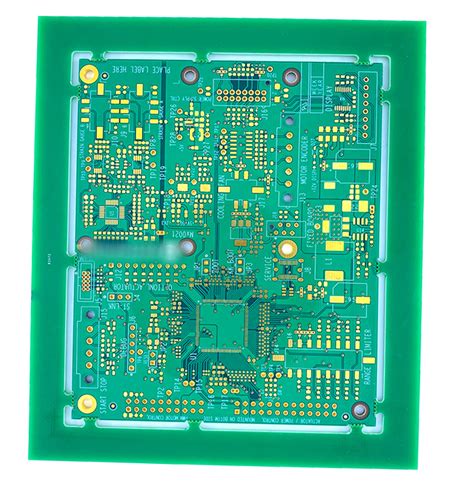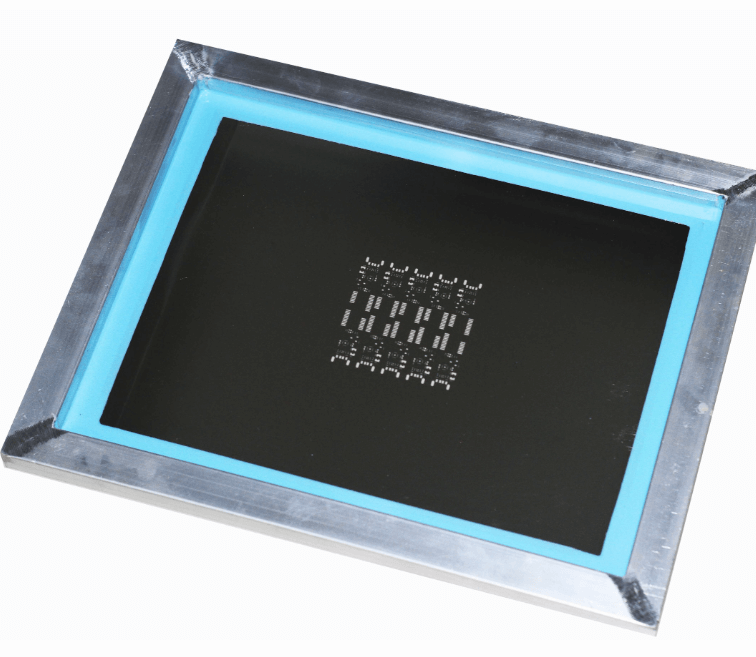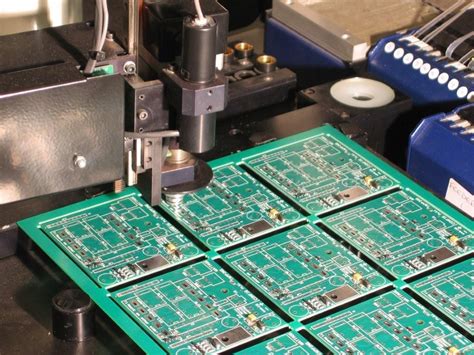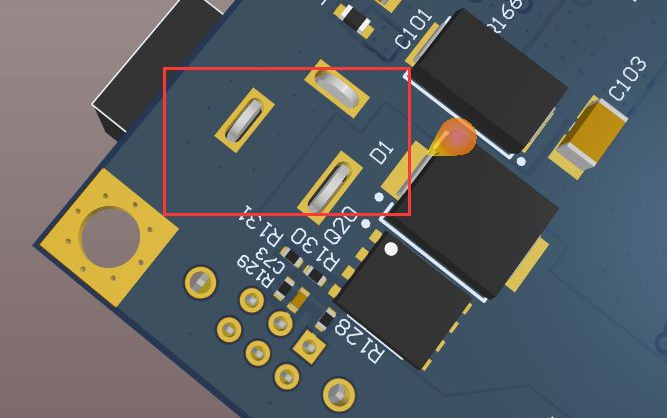Pcb use
PCB use In Consumer Electronics
Printed Circuit Boards (PCBs) are integral components in the realm of consumer electronics, serving as the backbone for a multitude of devices that have become indispensable in modern life. Their applications span a wide array of products, each benefiting from the compact, efficient, and reliable nature of PCBs. To understand the significance of PCBs in consumer electronics, it is essential to explore their various applications and the advantages they confer upon these devices.
One of the most ubiquitous applications of PCBs is in smartphones.
These devices, which have revolutionized communication and connectivity, rely heavily on PCBs to house and interconnect their numerous components. The compact design of PCBs allows for the integration of processors, memory chips, sensors, and other critical elements within the limited space of a smartphone. This not only enhances the device’s functionality but also contributes to its sleek and portable form factor. Furthermore, the reliability of PCBs ensures that smartphones can withstand the rigors of daily use, including drops and exposure to various environmental conditions.
In addition to smartphones, personal computers and laptops are another prominent category of consumer electronics that utilize PCBs extensively.
The motherboard, often referred to as the heart of a computer, is a complex PCB that connects the central processing unit (CPU), memory, storage devices, and peripheral components. The efficient layout of the motherboard PCB facilitates high-speed data transfer and optimal performance, which are crucial for both everyday computing tasks and more demanding applications such as gaming and professional software use. Moreover, the modular nature of PCBs in computers allows for easy upgrades and repairs, extending the lifespan of these devices.
Transitioning from computing devices, PCBs also play a critical role in the functionality of home entertainment systems.
Televisions, for instance, incorporate PCBs to manage signal processing, display control, and audio output. The advanced circuitry on these boards enables high-definition visuals and immersive sound experiences, enhancing the overall viewing experience for consumers. Similarly, gaming consoles, which have become a staple in many households, rely on PCBs to deliver powerful graphics and seamless gameplay. The integration of advanced components on these boards ensures that gaming consoles can handle the complex computations required for modern video games.
Another significant application of PCBs in consumer electronics is found in wearable technology.
Devices such as smartwatches and fitness trackers utilize miniaturized PCBs to pack a multitude of features into a compact form. These wearables monitor health metrics, provide notifications, and offer various other functionalities, all made possible by the efficient design of their internal PCBs. The durability and reliability of these boards are particularly important in wearables, as they are often exposed to physical activity and varying environmental conditions.
Furthermore, household appliances have also benefited from the incorporation of PCBs.
Modern appliances such as washing machines, refrigerators, and microwave ovens use PCBs to control their operations, enhance energy efficiency, and provide user-friendly interfaces. The integration of PCBs in these appliances has led to smarter and more efficient home environments, contributing to the convenience and comfort of daily life.
In conclusion, the applications of PCBs in consumer electronics are vast and varied, encompassing devices that range from smartphones and computers to home entertainment systems and wearable technology. The compact, efficient, and reliable nature of PCBs has enabled the development of advanced electronic devices that enhance our daily lives in numerous ways. As technology continues to evolve, the role of PCBs in consumer electronics is likely to expand further, driving innovation and shaping the future of this dynamic industry.

The Role Of PCBs In Medical Devices
Printed Circuit Boards (PCBs) have become indispensable in the realm of medical devices, playing a crucial role in the advancement of healthcare technology. These intricate boards, composed of conductive pathways, pads, and other features etched from copper sheets laminated onto a non-conductive substrate, serve as the backbone for a myriad of medical instruments. Their integration into medical devices has revolutionized patient care, diagnostics, and treatment methodologies, underscoring their significance in modern medicine.
To begin with, PCBs are fundamental in diagnostic equipment, which is essential for accurate and timely medical assessments.
Devices such as MRI machines, CT scanners, and X-ray systems rely heavily on PCBs to function effectively. These boards facilitate the precise control and processing of complex data, enabling healthcare professionals to obtain detailed images and information about a patient’s condition. Consequently, the reliability and accuracy of diagnostic procedures are significantly enhanced, leading to better patient outcomes.
Moreover, PCBs are integral to the operation of therapeutic devices, which are designed to treat various medical conditions.
For instance, pacemakers, which regulate heartbeats in patients with cardiac arrhythmias, depend on PCBs for their compact and efficient design. The miniaturization of PCBs has allowed for the development of smaller, more effective pacemakers that can be implanted with minimal invasiveness. Similarly, infusion pumps, which deliver controlled doses of medication to patients, utilize PCBs to ensure precise and consistent drug administration, thereby improving treatment efficacy and patient safety.
In addition to diagnostic and therapeutic applications, PCBs are also pivotal in monitoring devices that track vital signs and other critical health parameters.
Wearable health monitors, such as those used for continuous glucose monitoring in diabetic patients, incorporate PCBs to provide real-time data on blood sugar levels. This continuous monitoring enables patients and healthcare providers to make informed decisions about treatment adjustments, thereby enhancing disease management and quality of life. Furthermore, PCBs are used in devices like blood pressure monitors and pulse oximeters, which are essential for routine health assessments and emergency care.
Transitioning to the realm of surgical instruments, PCBs have facilitated the development of advanced tools that enhance the precision and safety of surgical procedures.
Robotic surgical systems, which allow for minimally invasive surgeries with greater accuracy, rely on PCBs to control their intricate movements and functions. These systems have transformed surgical practices, reducing recovery times and improving patient outcomes. Additionally, endoscopic devices, which provide visual access to internal organs, utilize PCBs to transmit high-resolution images, aiding surgeons in performing delicate procedures with enhanced visibility.
Furthermore, the role of PCBs extends to laboratory equipment used in medical research and diagnostics.
Devices such as DNA sequencers and polymerase chain reaction (PCR) machines, which are critical for genetic testing and research, depend on PCBs for their operation. These boards enable the precise control of temperature and other parameters, ensuring the accuracy and reliability of experimental results. Consequently, PCBs contribute to the advancement of medical research, leading to the development of new treatments and therapies.
In conclusion, the role of PCBs in medical devices is multifaceted and indispensable. From diagnostic and therapeutic equipment to monitoring devices and surgical instruments, PCBs have revolutionized the healthcare industry. Their ability to enhance the precision, reliability, and efficiency of medical devices has significantly improved patient care and treatment outcomes. As technology continues to evolve, the importance of PCBs in medical devices is expected to grow, further advancing the field of medicine and improving the quality of healthcare worldwide.

How PCBs Are Revolutionizing Automotive Technology
Printed Circuit Boards (PCBs) have become a cornerstone in the evolution of automotive technology, driving advancements that were once considered the realm of science fiction. As the automotive industry continues to innovate, the integration of PCBs has proven to be indispensable, facilitating a myriad of functionalities that enhance both the performance and safety of modern vehicles. This article delves into the multifaceted roles that PCBs play in revolutionizing automotive technology, highlighting their significance and the transformative impact they have on the industry.
To begin with, PCBs are integral to the operation of various electronic control units (ECUs) within a vehicle.
These ECUs manage and monitor essential systems such as engine control, transmission, and braking. By providing a reliable and compact platform for electronic components, PCBs ensure that these systems operate efficiently and effectively. The precision and reliability offered by PCBs are crucial, as they directly influence the vehicle’s performance and fuel efficiency. Moreover, the miniaturization of components facilitated by PCBs allows for more sophisticated and compact designs, which is particularly beneficial in the context of modern automotive engineering where space optimization is paramount.
Transitioning to the realm of safety, PCBs play a pivotal role in the development and implementation of advanced driver-assistance systems (ADAS).
These systems, which include features such as adaptive cruise control, lane departure warning, and automatic emergency braking, rely heavily on the seamless integration of sensors, cameras, and other electronic components. PCBs provide the necessary infrastructure to interconnect these components, enabling real-time data processing and decision-making. This not only enhances the safety of the vehicle but also contributes to a more intuitive and responsive driving experience.
In addition to performance and safety, PCBs are also at the heart of the burgeoning field of automotive infotainment systems.
Modern vehicles are equipped with sophisticated entertainment and navigation systems that offer a wide range of functionalities, from GPS navigation to multimedia playback and internet connectivity. The complexity of these systems necessitates the use of high-density interconnect (HDI) PCBs, which can accommodate a large number of components in a compact space. This ensures that the infotainment systems are not only powerful but also reliable and user-friendly.
Furthermore, the advent of electric vehicles (EVs) has underscored the importance of PCBs in automotive technology.
EVs require efficient power management systems to optimize battery performance and ensure the longevity of the vehicle. PCBs are used in battery management systems (BMS) to monitor and regulate the charging and discharging of the battery cells. This is critical for maintaining the health of the battery and preventing issues such as overcharging or overheating. Additionally, PCBs are employed in the power electronics that control the electric motor, further highlighting their versatility and indispensability in modern automotive applications.
As we look to the future, the role of PCBs in automotive technology is set to expand even further.
The ongoing development of autonomous vehicles, which rely on a complex network of sensors, processors, and communication systems, will undoubtedly benefit from advancements in PCB technology. Innovations such as flexible PCBs and multi-layered designs will enable even more sophisticated and compact electronic systems, paving the way for the next generation of smart, connected vehicles.
In conclusion, PCBs are revolutionizing automotive technology by providing the essential infrastructure for a wide range of electronic systems. From enhancing vehicle performance and safety to enabling advanced infotainment and power management in electric vehicles, the impact of PCBs is profound and far-reaching. As the automotive industry continues to evolve, the role of PCBs will remain central, driving innovation and shaping the future of transportation.

The Importance Of PCBs In Industrial Automation
Printed Circuit Boards (PCBs) are integral to the realm of industrial automation, serving as the backbone for a multitude of electronic devices and systems. Their importance cannot be overstated, as they provide the essential infrastructure that supports the complex operations of automated machinery. In the context of industrial automation, PCBs facilitate the seamless integration of various components, ensuring that systems operate efficiently and reliably.
One of the primary reasons PCBs are indispensable in industrial automation is their ability to support high-density component placement.
This capability allows for the miniaturization of electronic circuits, which is crucial in modern industrial environments where space is often at a premium. By enabling the compact design of control systems, PCBs contribute to the optimization of floor space, thereby enhancing the overall efficiency of industrial operations.
Moreover, PCBs are designed to withstand harsh industrial conditions, including extreme temperatures, humidity, and exposure to chemicals.
This durability is essential for maintaining the reliability and longevity of automated systems. The use of high-quality materials and advanced manufacturing techniques ensures that PCBs can endure the rigors of industrial environments, thereby reducing the likelihood of system failures and minimizing downtime.
In addition to their physical robustness, PCBs play a critical role in ensuring the precision and accuracy of industrial automation systems.
They provide a stable platform for the integration of sensors, actuators, and other control elements, which are essential for the precise monitoring and regulation of industrial processes. The intricate circuitry of PCBs allows for the accurate transmission of signals, ensuring that automated systems respond correctly to various inputs and operate within specified parameters.
Furthermore, the versatility of PCBs makes them suitable for a wide range of industrial applications.
From simple control panels to complex robotic systems, PCBs can be customized to meet the specific requirements of different automation tasks. This adaptability is particularly important in industries such as manufacturing, automotive, and aerospace, where the demands for automation are constantly evolving. By enabling the development of tailored solutions, PCBs help industries stay competitive and responsive to changing market needs.
Another significant advantage of PCBs in industrial automation is their contribution to the overall safety of operations.
The precise and reliable performance of PCBs ensures that automated systems function correctly, thereby reducing the risk of accidents and malfunctions. Additionally, PCBs can be designed with built-in safety features, such as fail-safes and redundancy mechanisms, which further enhance the safety and reliability of industrial automation systems.
The role of PCBs in facilitating communication between different components of an automated system is also noteworthy.
They enable the integration of various communication protocols, such as Ethernet, CAN bus, and Modbus, which are essential for the coordination and synchronization of industrial processes. This capability ensures that all parts of an automated system work together harmoniously, thereby optimizing performance and efficiency.
In conclusion, the importance of PCBs in industrial automation is multifaceted, encompassing aspects such as high-density component placement, durability, precision, versatility, safety, and communication. Their ability to support the complex and demanding requirements of modern industrial environments makes them an indispensable component of automated systems. As industries continue to advance and embrace new technologies, the role of PCBs in industrial automation will undoubtedly remain crucial, driving innovation and efficiency in the years to come.






